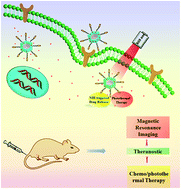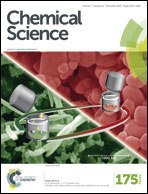Polydopamine coated manganese oxide nanoparticles with ultrahigh relaxivity as nanotheranostic agents for magnetic resonance imaging guided synergetic chemo-/photothermal therapy†
Abstract
Mn-based nanoparticles have been regarded as a new class of probes for magnetic resonance imaging (MRI), but their low relaxivity is the major obstacle for applications in vivo. Herein, we designed and constructed a multifunctional nanotheranostic (FA-Mn3O4@PDA@PEG) for MRI guided combinatorial chemo-/photothermal therapy (PTT) for cancer. The ultrahigh relaxivity of 14.47 mM−1 s−1 makes the nanotheranostic an excellent contrast agent for MRI in vitro and in vivo, and provides comprehensive information for tumor diagnosis. When irradiated with an 808 nm NIR laser, FA-Mn3O4@PDA@PEG exhibits a remarkably improved and synergistic therapeutic effect compared to PTT or chemotherapy alone, providing high therapeutic efficiency and low side effects of drugs. These findings are of great interest and will inspire us to develop highly effective MRI guided synergetic chemo-/photothermal therapy for cancer treatment.


 Please wait while we load your content...
Please wait while we load your content...